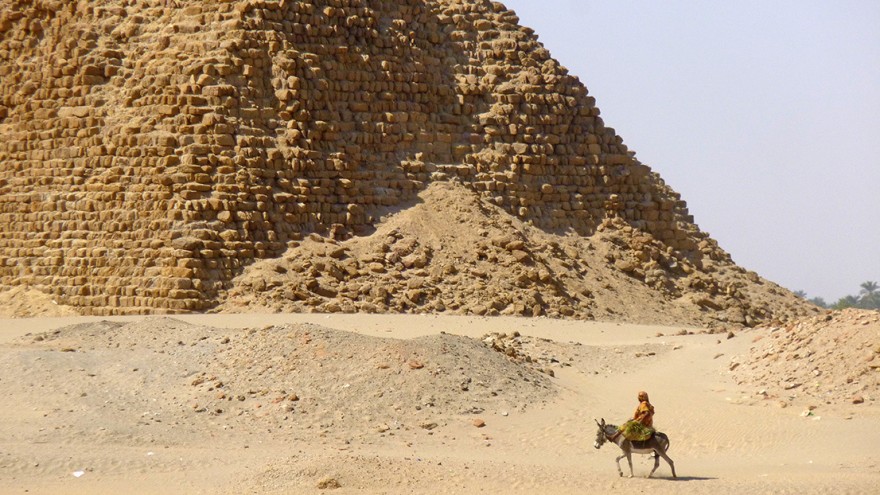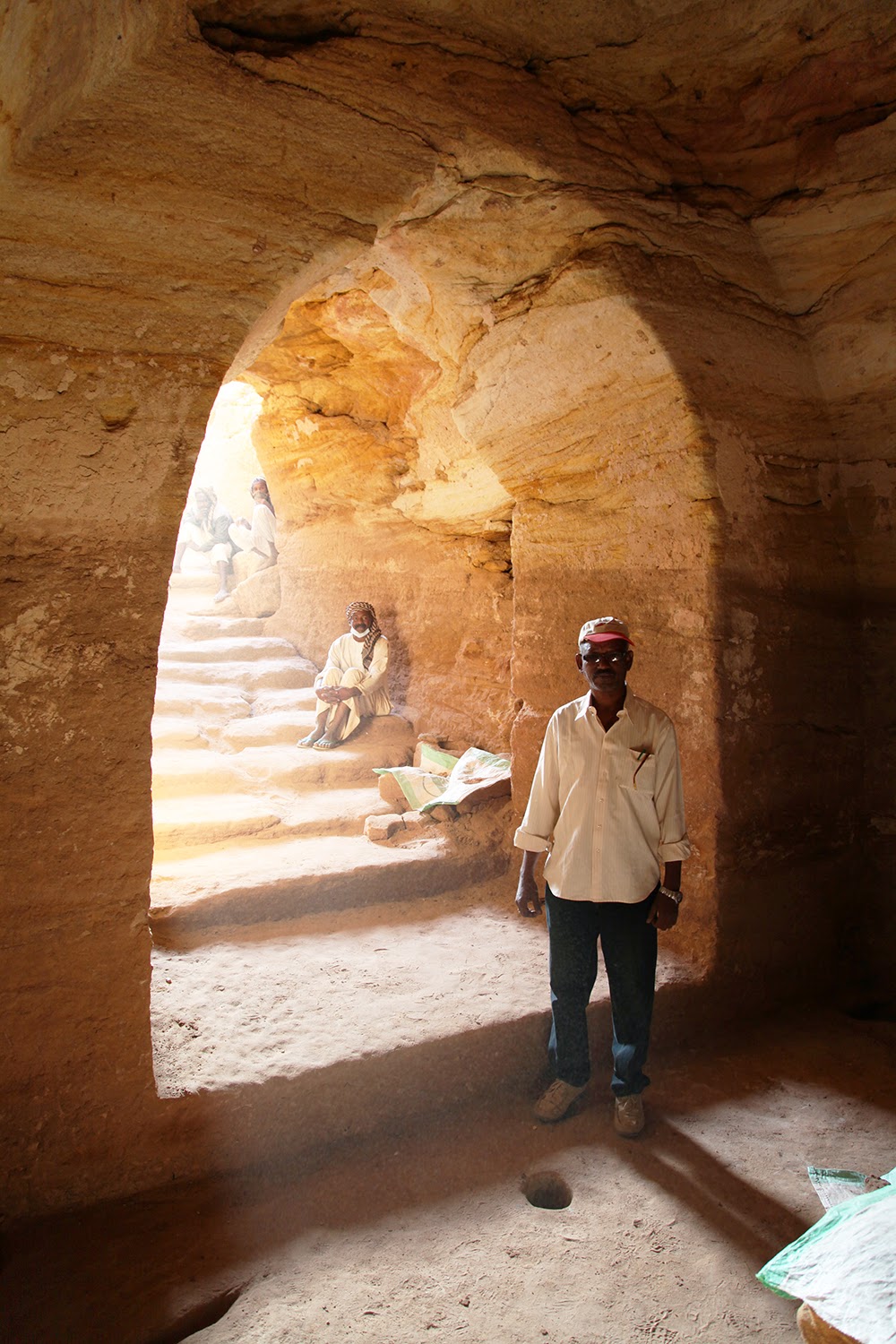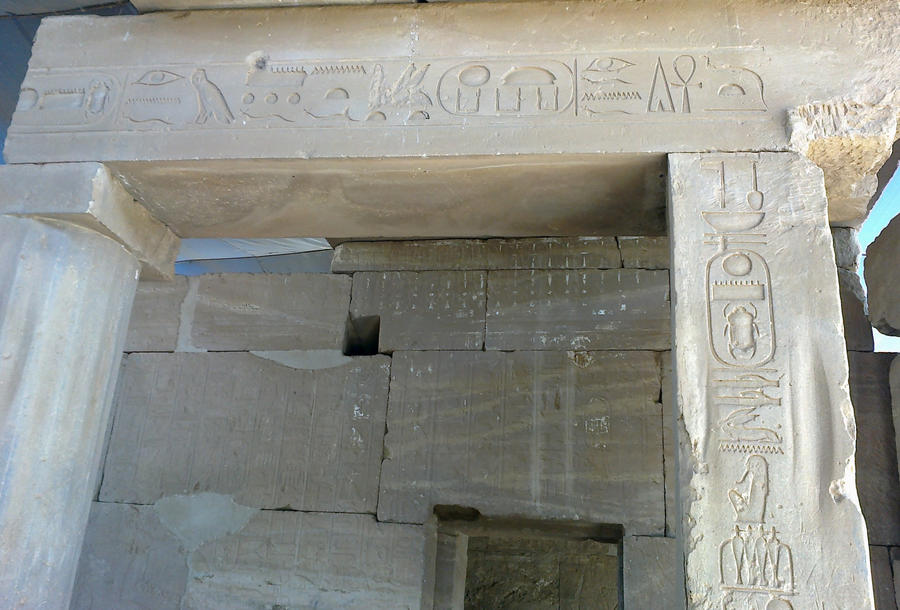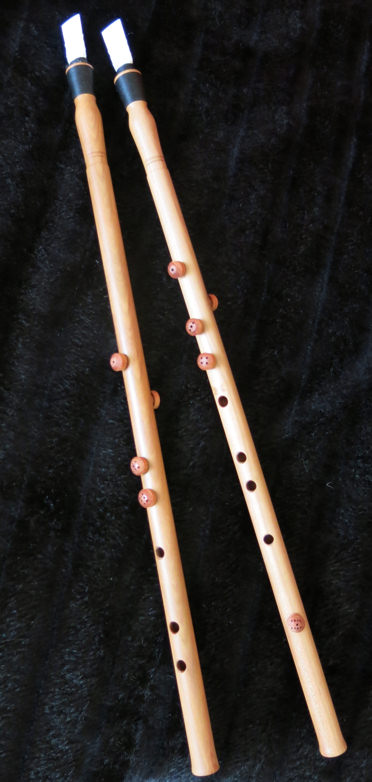Misreeya
Pro
Here the article from Museum of fine arts in Boston America
Conservation Project: Auloi of Meroë
http://www.mfa.org/collections/conse...e_auloiofmeroe



Conservators have begun a special project focused on the preservation of a group of ancient musical instruments known as auloi. The instruments were excavated in northern Sudan in 1921 and have never been treated. Expected to last multiple years, the project is a collaborative effort between conservators and curators from the Musical Instruments and Art of the Ancient World departments. Please check back often to see progress updates posted below.
The Auloi

An assortment of the best preserved elements, showing possible locations of key features. This arrangement does not represent any actual pipe.
This group of auloi, the principal musical wind instrument of antiquity, was excavated in 1921 by the Harvard University–Museum of Fine Arts Expedition in the burial of Queen Amanishakheto at Meroë. Amanishakheto, who reigned from 10–1 B.C., was a powerful ruler, and after a period of conflict between Meroë and the Roman Empire, she signed a treaty with the emperor Augustus that set the stage for a new era of trade and communication between the two powers. This cache is by far the largest group of such reedpipes ever found together. Called an aulos by the Greeks, the instrument consists of two divergent pipes, each with its own double reed and held separately in each hand, but played together simultaneously.

This Athenian shallow two-handled cup (kylix) from the Late Archaic period, attributed to the Proto-Panaitian Group and dated to about 510–500 B.C., is decorated with an image of a man playing a double pipe with a pipe case hanging on the wall. Its inscription reads: “Epidromos is handsome” (Epidromos kalos).
Auloi are attested from possibly the sixth century B.C. (certainly by the third century B.C.) until the end of the ancient world, and there are many varieties. The second century Greek scholar Julius Pollux, for example, lists 20 types by name, based on the context in which they were played or by the nations that used them. (Click here to learn about the iconography of auloi in the MFA collection.)
Early auloi were made of sections of bone joined together by socket and tenon. Although no complete pipes survive among some hundreds of extant sections, their structure can still be understood. Construction of auloi evolved over time, and by the Hellenistic period (332–30 B.C.), mechanically sophisticated systems, made of bronze, bone, and wood were in use. Pipes of this type have unfortunately suffered from the fragility of wood and the liability of bronze to corrode, and so are more difficult to comprehend and interpret.
Although Meroë is located hundreds of miles south of the Mediterranean Sea, trade routes along the Nile and the Red Sea provided paths by which influence—cultural and commercial—was exchanged with the north, as well as with western and central Asia. The metropolitan quality and sophistication of the city is reflected in surviving art and artifacts, and is likewise evident in the craftsmanship of these musical instruments. This collection of auloi is believed to be the complete equipment of a professional musician, who may have been involved in the funerary rites for the queen.
Excavation History
The Harvard University–Boston Museum of Fine Arts Expedition was established in 1905, when George Andrew Reisner became the Museum’s curator of Egyptian Art as well as Harvard’s professor of Egyptology. Reisner was one of the leading archaeologists of his day, introducing new techniques, in particular the extensive use of photographic records, which revolutionized the field of Egyptology. In 1913, Reisner and his team turned their attention southward to Nubia, the region that today encompasses southern Egypt and northern Sudan. There, over the next two decades, the Expedition excavated a variety of sites, including royal cemeteries of the second millennium B.C. at Kerma and of the first millennium B.C. at el-Kurru, Nuri, and Meroë.
North Sudan ruins.









Queen Amanishakheto’s pyramid was discovered in the northern cemetery at Meroë in 1921. It had been previously found and emptied of its rich treasure of jewelry years earlier by Italian physician and explorer Giuseppi Ferlini. The auloi were among the few objects that remained in the tomb.


A cross section drawing of the site, showing the steps leading down to the tomb. The pipes were found in the filling at the entrance of the burial chamber.
Conservation Strategy
The Meroë pipes were unearthed in a cluster. Approximately 7 meters (23 feet) of tubing, plus enumerable fragments, were recovered. They appear to correspond to at least 16 different pipes, representing at least 4 different types.

The auloi during excavation.
Due to the thin-walled nature of the objects, exposure to long-term burial, as well as handling and shipping post-excavation, the pipes are now extremely fragmented and are in too fragile a state to be handled and studied safely. Most are still stored in the wooden trays in which they were shipped from the Sudan some 90 years ago. Embedded between some of the fragments are small pieces of paper with notes from the excavators, some written in Arabic. Due to movement and repeated handling over the years, the original groupings (if each pipe was indeed salvaged as one, even if fragmented) have been disturbed, although it remains unknown to what extent.

Stabilization and rehousing in state-of-the-art customized storage units are required to allow further analysis, documentation, and interpretation of these fragments. The initial phase of rehousing and removal from the shipping containers must be recorded in detail and can be compared to a miniature excavation, as all information, such as location and associated notes, may lead to further understanding of the fragments. Scientific analysis of all materials will provide further insights into the manufacture and use of the raw materials. It is possible that carbon-14 dating will help establish a more accurate date of when these items were created.
There are enough differences between the pipes (diameters, wall thicknesses, finger-hole distributions and shapes, closure mechanisms, external profiles, materials, etc.) to ascribe fragments to different pipes and to join or associate extended sections together. It will also be necessary to compare the restored sections with other finds (from Pompeii, Greece, Turkey, Slovenia, London, etc.), in order to accurately interpret the entire set of pipes. A study of ancient images of auloi by Maurice Byrne may enable identification of pair-combinations of these 16 pipes, which may have been played together.
Copies could then be fabricated, and as enough is now known about the reeds used on auloi, such copies could be played. With the completion of reasonably accurate copies, the musical potential of such instruments could be rediscovered, adding immeasurably to the knowledge of music in the Roman period
Conservation Project: Auloi of Meroë
Conservation Project: Auloi of Meroë, August 2015
Conservation Project: Auloi of Meroë
http://www.mfa.org/collections/conse...e_auloiofmeroe



Conservators have begun a special project focused on the preservation of a group of ancient musical instruments known as auloi. The instruments were excavated in northern Sudan in 1921 and have never been treated. Expected to last multiple years, the project is a collaborative effort between conservators and curators from the Musical Instruments and Art of the Ancient World departments. Please check back often to see progress updates posted below.
The Auloi

An assortment of the best preserved elements, showing possible locations of key features. This arrangement does not represent any actual pipe.
This group of auloi, the principal musical wind instrument of antiquity, was excavated in 1921 by the Harvard University–Museum of Fine Arts Expedition in the burial of Queen Amanishakheto at Meroë. Amanishakheto, who reigned from 10–1 B.C., was a powerful ruler, and after a period of conflict between Meroë and the Roman Empire, she signed a treaty with the emperor Augustus that set the stage for a new era of trade and communication between the two powers. This cache is by far the largest group of such reedpipes ever found together. Called an aulos by the Greeks, the instrument consists of two divergent pipes, each with its own double reed and held separately in each hand, but played together simultaneously.

This Athenian shallow two-handled cup (kylix) from the Late Archaic period, attributed to the Proto-Panaitian Group and dated to about 510–500 B.C., is decorated with an image of a man playing a double pipe with a pipe case hanging on the wall. Its inscription reads: “Epidromos is handsome” (Epidromos kalos).
Auloi are attested from possibly the sixth century B.C. (certainly by the third century B.C.) until the end of the ancient world, and there are many varieties. The second century Greek scholar Julius Pollux, for example, lists 20 types by name, based on the context in which they were played or by the nations that used them. (Click here to learn about the iconography of auloi in the MFA collection.)
Early auloi were made of sections of bone joined together by socket and tenon. Although no complete pipes survive among some hundreds of extant sections, their structure can still be understood. Construction of auloi evolved over time, and by the Hellenistic period (332–30 B.C.), mechanically sophisticated systems, made of bronze, bone, and wood were in use. Pipes of this type have unfortunately suffered from the fragility of wood and the liability of bronze to corrode, and so are more difficult to comprehend and interpret.
Although Meroë is located hundreds of miles south of the Mediterranean Sea, trade routes along the Nile and the Red Sea provided paths by which influence—cultural and commercial—was exchanged with the north, as well as with western and central Asia. The metropolitan quality and sophistication of the city is reflected in surviving art and artifacts, and is likewise evident in the craftsmanship of these musical instruments. This collection of auloi is believed to be the complete equipment of a professional musician, who may have been involved in the funerary rites for the queen.
Excavation History
The Harvard University–Boston Museum of Fine Arts Expedition was established in 1905, when George Andrew Reisner became the Museum’s curator of Egyptian Art as well as Harvard’s professor of Egyptology. Reisner was one of the leading archaeologists of his day, introducing new techniques, in particular the extensive use of photographic records, which revolutionized the field of Egyptology. In 1913, Reisner and his team turned their attention southward to Nubia, the region that today encompasses southern Egypt and northern Sudan. There, over the next two decades, the Expedition excavated a variety of sites, including royal cemeteries of the second millennium B.C. at Kerma and of the first millennium B.C. at el-Kurru, Nuri, and Meroë.
North Sudan ruins.








Queen Amanishakheto’s pyramid was discovered in the northern cemetery at Meroë in 1921. It had been previously found and emptied of its rich treasure of jewelry years earlier by Italian physician and explorer Giuseppi Ferlini. The auloi were among the few objects that remained in the tomb.


A cross section drawing of the site, showing the steps leading down to the tomb. The pipes were found in the filling at the entrance of the burial chamber.
Conservation Strategy
The Meroë pipes were unearthed in a cluster. Approximately 7 meters (23 feet) of tubing, plus enumerable fragments, were recovered. They appear to correspond to at least 16 different pipes, representing at least 4 different types.

The auloi during excavation.
Due to the thin-walled nature of the objects, exposure to long-term burial, as well as handling and shipping post-excavation, the pipes are now extremely fragmented and are in too fragile a state to be handled and studied safely. Most are still stored in the wooden trays in which they were shipped from the Sudan some 90 years ago. Embedded between some of the fragments are small pieces of paper with notes from the excavators, some written in Arabic. Due to movement and repeated handling over the years, the original groupings (if each pipe was indeed salvaged as one, even if fragmented) have been disturbed, although it remains unknown to what extent.

Stabilization and rehousing in state-of-the-art customized storage units are required to allow further analysis, documentation, and interpretation of these fragments. The initial phase of rehousing and removal from the shipping containers must be recorded in detail and can be compared to a miniature excavation, as all information, such as location and associated notes, may lead to further understanding of the fragments. Scientific analysis of all materials will provide further insights into the manufacture and use of the raw materials. It is possible that carbon-14 dating will help establish a more accurate date of when these items were created.
There are enough differences between the pipes (diameters, wall thicknesses, finger-hole distributions and shapes, closure mechanisms, external profiles, materials, etc.) to ascribe fragments to different pipes and to join or associate extended sections together. It will also be necessary to compare the restored sections with other finds (from Pompeii, Greece, Turkey, Slovenia, London, etc.), in order to accurately interpret the entire set of pipes. A study of ancient images of auloi by Maurice Byrne may enable identification of pair-combinations of these 16 pipes, which may have been played together.
Copies could then be fabricated, and as enough is now known about the reeds used on auloi, such copies could be played. With the completion of reasonably accurate copies, the musical potential of such instruments could be rediscovered, adding immeasurably to the knowledge of music in the Roman period
Conservation Project: Auloi of Meroë
Conservation Project: Auloi of Meroë, August 2015
Last edited:


